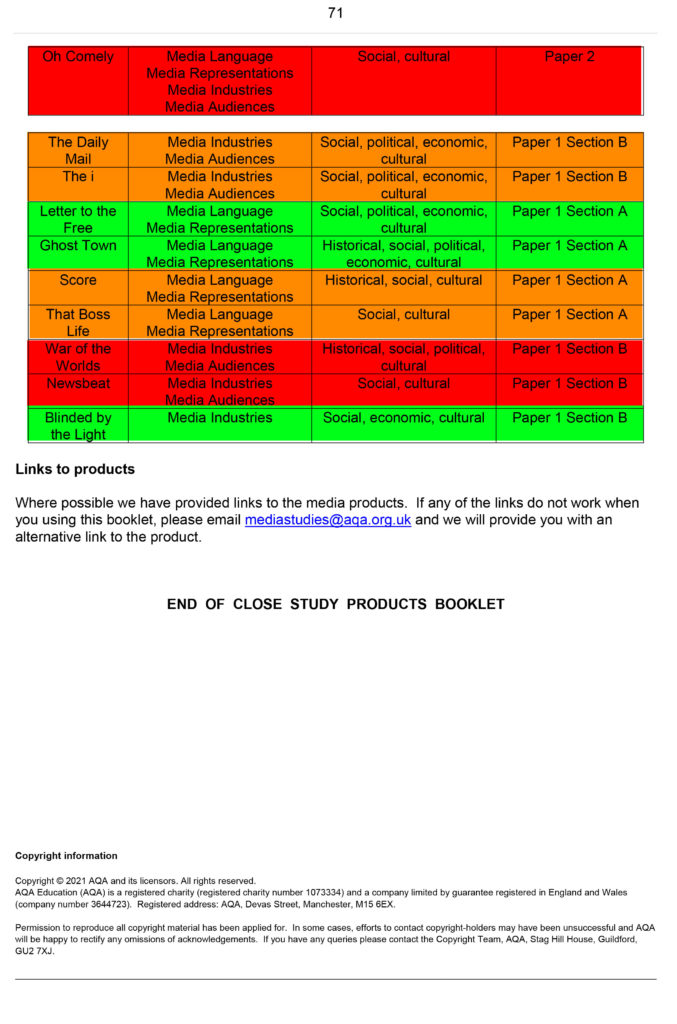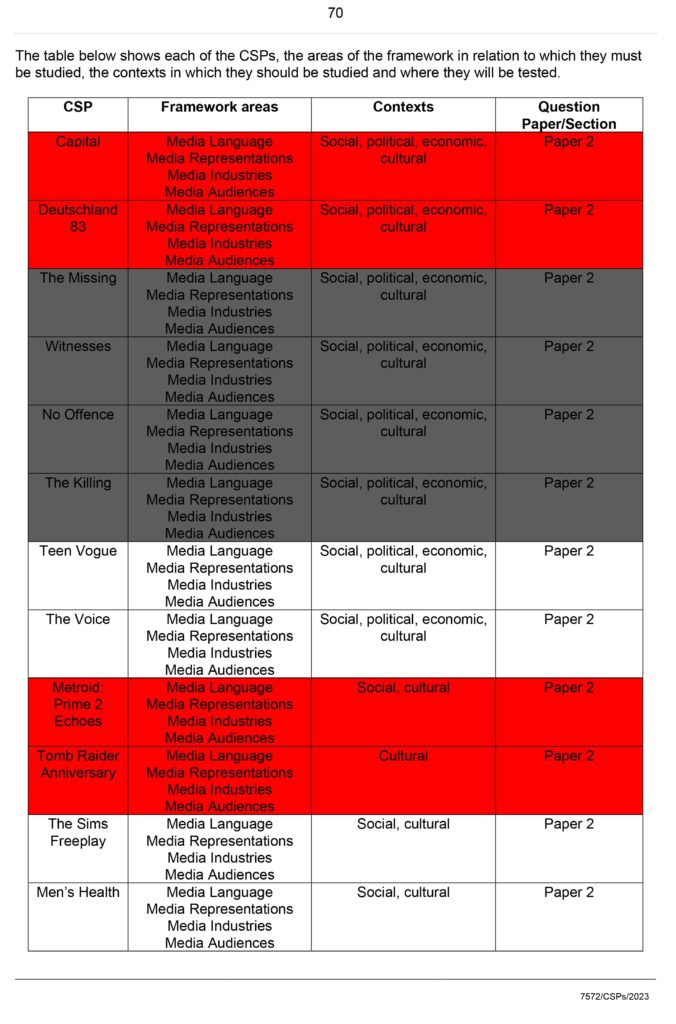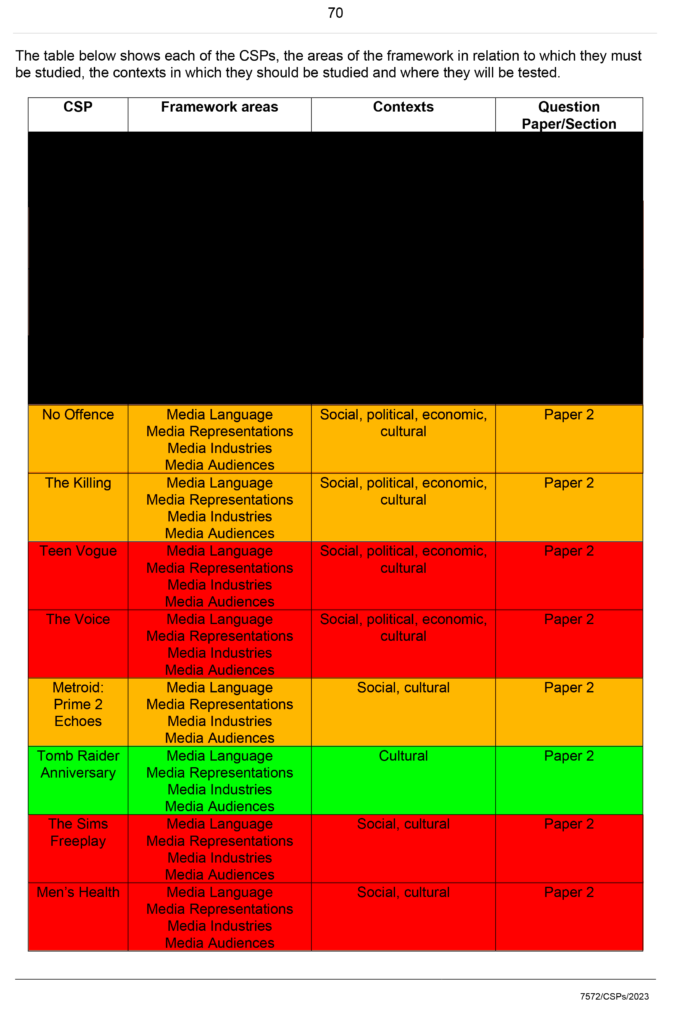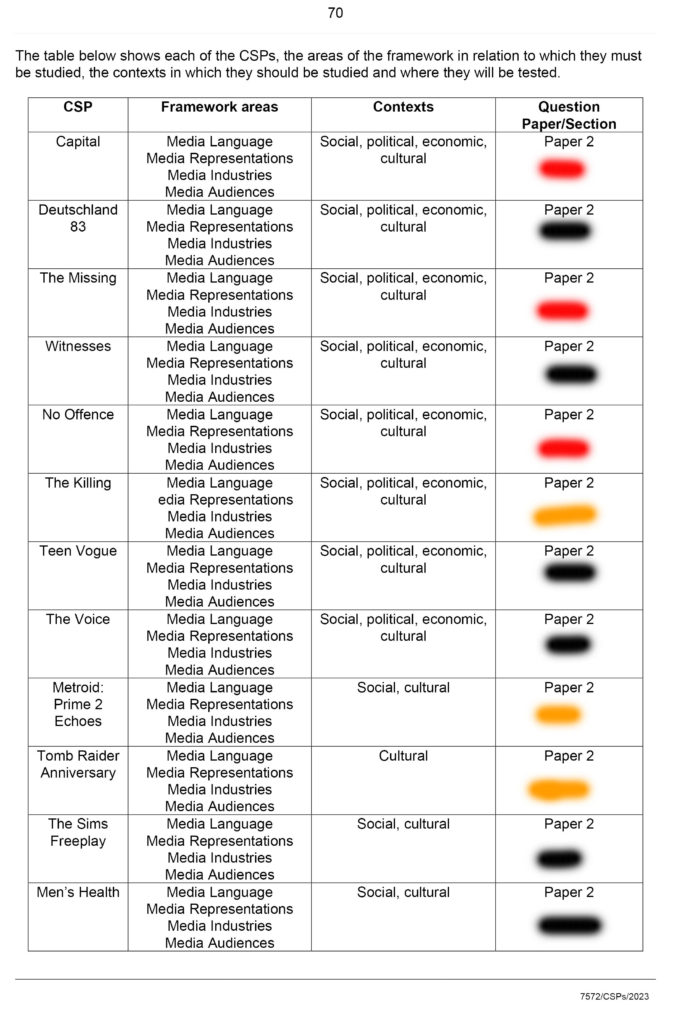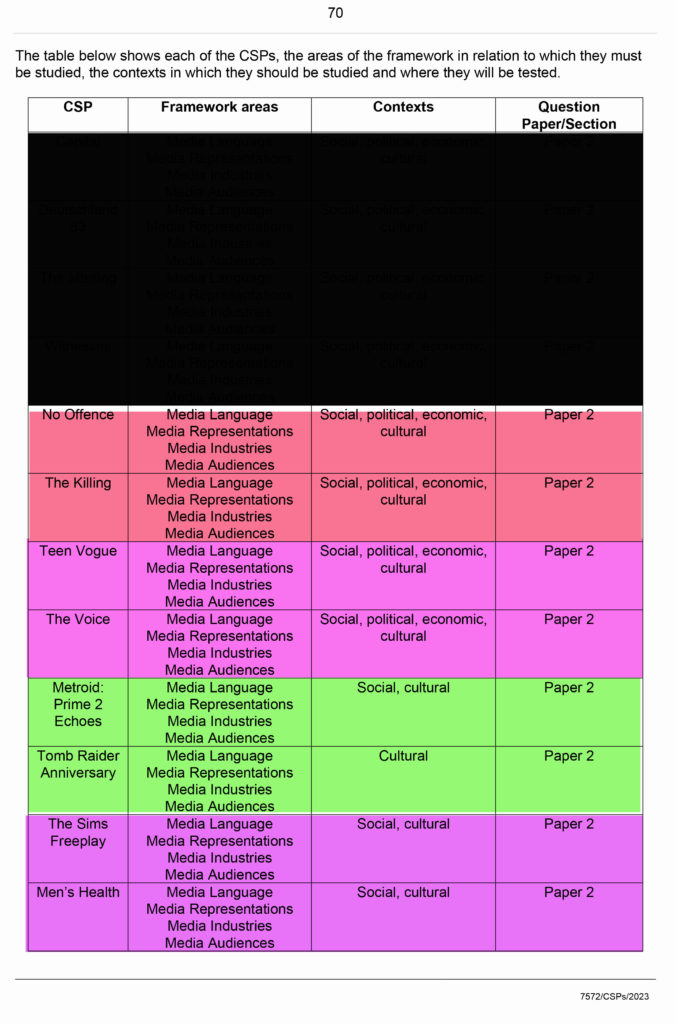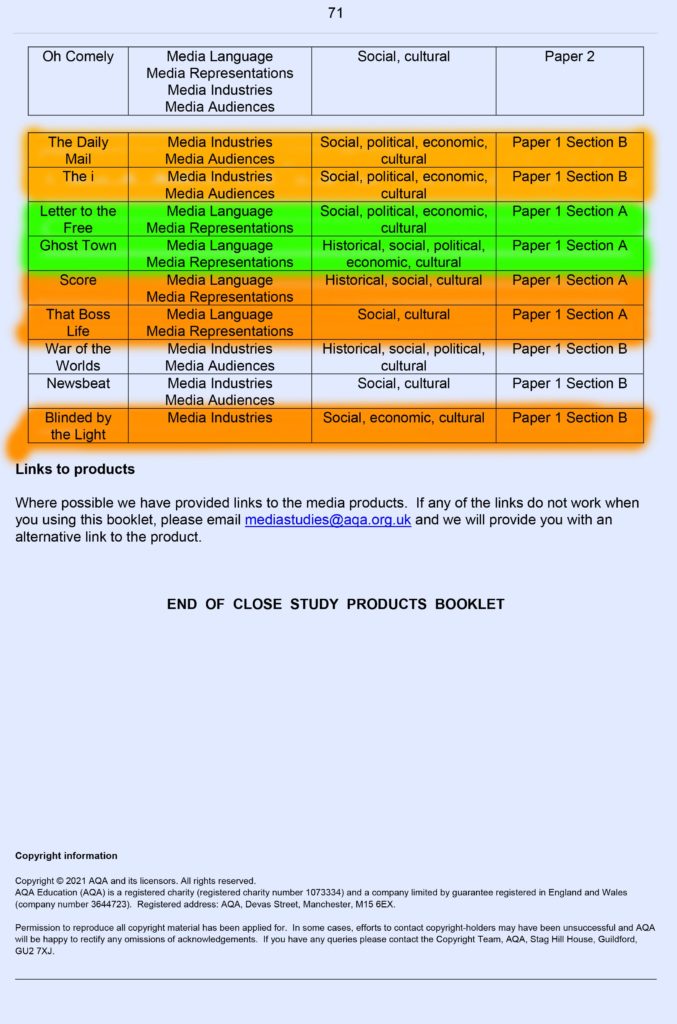

Command word
Command word
describe– describe is saying what you see and know
compare– finding differences and similarities between 2 things
evaluate– using the information given explain what is going on
analyse– look into something in detail in order to describe what is going on
Knowledge– knowing what it means
understanding– having a deeper understanding how something really works
| what do i know | What do i understand what does it mean | |
| Noam Chomsky | 5 filters of media | |
| James Curran | ||
| semiotics | ||
| what do i know | What do i understand what does it mean | |
| Noam Chomsky | 5 filters of media | Chomsky’s theory can be applied to the rules and regulations of newspaper’s and how they tell us what they want us to hear controlling the masses through bias news |
| James Curran | power and media industries theory. | arguing that patterns of ownership and control are the most significant factors in how the media operate. Theoretically media studies and cultural studies are a study conducted to observe the patterns of cultural change in society that is influenced by the media in which the media takes an important role in the new forms of culture construction. |
| jurgan habermaus | he wrote a book The Structural Transformation of the Public Sphere in 1962 where he explained his public sphere theory | Habermaas’s theory is that the world is increasingly being taken over by political and economic systems. the public sphere is the world of politics where strangers come together to engage in the free exchange of ideas, and is open to everyone, whereas the private sphere is a smaller, typically enclosed world that is only open to those who have permission to enter it The ideology of the public sphere theory is that the government’s laws and policies should be steered by the public sphere and that the only legitimate governments are those that listen to the public sphere. |
| semiotics | ||
| representation | ||
| post colonialism | ||
| narrative theories | Narrative theory starts from the assumption that narrative is a basic human strategy for coming to terms with fundamental elements of our experience, such as time, process, and change, and it proceeds from this assumption to study the distinctive nature of narrative and its various structures | The idea that a story has two parts which are the important parts and the Kernels (something that grows): Important part(s). The key parts of the film that make up the plot/narrative structure. If taken out the story or narrative would not work. |
| genre | Thomas Schatz: Only 2 Genres | Neale explains that Genre is a collection of structured repertoire of elements in which signify that a genre is a genre. For example a typically horror movie will have a dark forest, moody lighting, and dark colours. Neale also promotes the idea that genre is a process, that genres change as society and culture changes. As such, genres are historically specific and reflect / represent changing ideas, attitudes, values and beliefs of society at any particular moment in history. |
| key terms for industry business ownership | Public Service Media cross-ownership | The three main media business models are monopoly, oligopoly, and monopolistic competition. The print, recorded music, and film industries are generally oligopolies; television is generally monopolistic competition; and live event ticketing is essentially a monopoly. |
| Public Service Broadcasting | Public broadcasting involves radio, television and other electronic media outlets whose primary mission is public service. In many countries of the world, funding comes from governments, especially via annual fees charged on receivers. the ethos of the bbc is to inform entertain and educat | Horizontal Integration = When a conglomerate acquires media companies of the same media type. Vertical Integration = Ownerships that allow a media company to produce and distribute products. delivering impartial and trusted news, UK-originated programmes and distinctive content. |
| Lasswell | well known for his Model of communication hyperdermic needle theory “hypodermic needle theory”? – also known as magic bullet theory. – implied that mass media had a direct, immediate and powerful impact on the audience. | This model is also called a ‘linear model of communication’, ‘uni-directional process’ or ‘action model, because it describes a one-way process within communication. It is seen as one of the most influential communication models. The model consists of five components, that are used as an analysis tool for evaluating the entire communication process. The previous ‘W’ questions are the basis for these components. The answers to these questions provide insight into the communication between people. describes an act of communication by defining who said it, what was said, in what channel it was said, to whom it was said, and with what effect it was said. |
| Lazarsfeld | founder of modern research surveys two-step flow of mass communication Paul Felix Lazarsfeld, popularly known as the founder of modern research surveys, made considerable contributions towards statistical survey analysis, panel methods, latent structure analysis and contextual analysis | This theory suggests that the influence of mass communication on the public is not linear, but a two-step flow of communication process. Information from the mass media is first conveyed to opinion leaders who use their social networks to spread the information to the people affected by it. |
| Uses and Gratifications | Mass Communication theory Created the early 1940s by Katz and Blumler (1974) | Uses and gratifications theory asserts that people use media to gratify specific wants and needs. The theory states that media consumers are passive consumers of mass communications; rather, they play an active role in media consumption. |
| stuart hall | Stuart Hall was a Jamaican-born British sociologist, cultural theorist and political activist. He was born in Kingston in 1932 then came to the UK in the 1950s and was later dubbed the “godfather of multiculturalism” for his contributions to Sociology. | representation is the ability to describe or imagine. Representation is important because culture is always formed through meaning and language, in this case, language is a symbolic form or a form of representation. Stuart Hall argued that cultural identity is not only a matter a ‘being’ but of ‘becoming’, ‘belonging as much to the future as it does to the past’. |
| George Gerbner | The George Gerbner Model of Communication is an extension of Lasswel’s communication model. developed what he called “mean world syndrome,” the belief that the world is more violent and brutal than it really is. | According to Gerbner’s research, the more time spent absorbing the world of television, the more likely people are to report perceptions of social reality that can be traced to televisions most common representations of life and society suggests that people who are regularly exposed to media for long periods of time are more likely to perceive the world’s social realities as they are presented by the media they consume, which in turn affects their attitudes and behaviors |
| David Gauntletts | This theory is sometimes referred to as the ‘pick & mix’ theory, as it allows audiences to pick which aspects of a text they want to construct their identity, whole leaving other bits well alone | Gauntlett believes that while everyone is an individual, people tend to exist within larger groups who are similar to them. He thinks the media do not create identities, but just reflect them instead. |
It helps identify how media texts are classified, organised and understood, essentially around SIMILARITIES and DIFFERENCE. Media texts hold similar patterns, codes and conventions that are both PREDICTABLE and EXPECTED, but are also INNOVATIVE (different) and UNEXPECTED.




